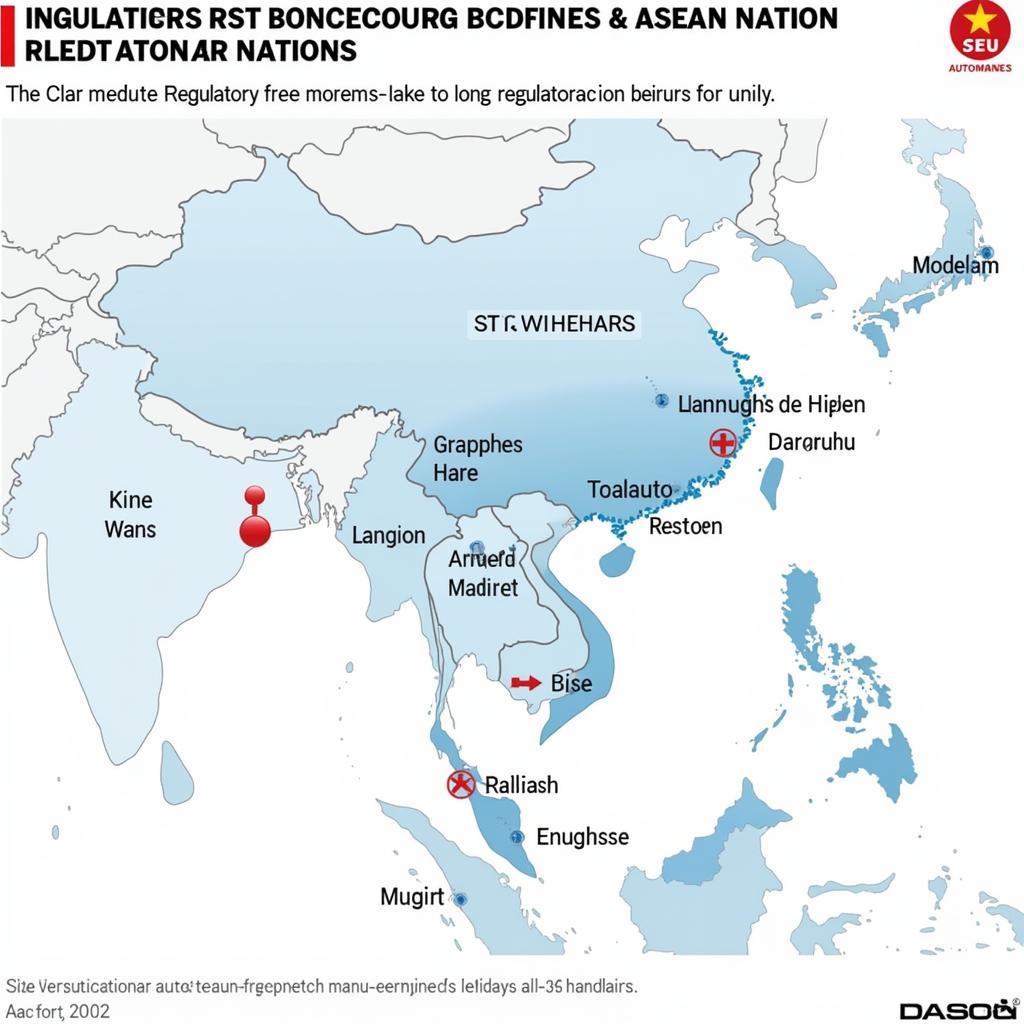The ASEAN car market presents a dynamic landscape of growth, challenges, and opportunities. Understanding the intricacies of Asean Car Sales is crucial for manufacturers, investors, and anyone interested in the region’s economic pulse. This article delves into the key factors shaping car sales in Southeast Asia, examining trends, challenges, and future prospects.
Driving Forces Behind ASEAN Car Sales
Several factors contribute to the ebb and flow of ASEAN car sales. Rising disposable incomes, a growing middle class, and increasing urbanization are key drivers. Improved infrastructure and financing options also play a significant role in making car ownership more accessible. However, challenges such as traffic congestion, environmental concerns, and fluctuating economic conditions can impact sales figures.
You can find more insights into the ASEAN automotive industry at asean automotive industry.
The Impact of Economic Growth
Economic growth is a crucial determinant of car sales. As economies expand, disposable incomes rise, leading to increased consumer spending on durable goods like cars. The ASEAN region has experienced significant economic growth in recent years, fueling the demand for automobiles.
Infrastructure Development and Its Role
Improved infrastructure, including better roads and highways, facilitates car ownership and usage. This is particularly true in emerging ASEAN economies where infrastructure development is ongoing. The expansion of road networks opens up new markets and encourages car sales.
 ASEAN Road Infrastructure and its Impact on Car Sales
ASEAN Road Infrastructure and its Impact on Car Sales
The Rise of Ride-Hailing Services
The proliferation of ride-hailing services has had a complex impact on car sales. While it offers an alternative to car ownership, especially in urban areas, it also increases the demand for vehicles used by ride-hailing drivers. This duality creates both challenges and opportunities for car manufacturers.
Navigating the Challenges in ASEAN Car Sales
Despite the positive growth drivers, the ASEAN car market faces several challenges. These include varying regulations across countries, fluctuating currency exchange rates, and competition from established and emerging players. Addressing these challenges requires strategic planning and adaptation.
Regulatory Landscape and its Implications
Each ASEAN member state has its own set of regulations regarding car imports, manufacturing, and sales. This fragmented regulatory landscape can be complex for manufacturers and importers to navigate. Harmonization of regulations could streamline the market and boost sales.
 Navigating Regulatory Challenges in the ASEAN Car Sales Market
Navigating Regulatory Challenges in the ASEAN Car Sales Market
Competition and Market Share Dynamics
The ASEAN car market is highly competitive, with both established global brands and emerging domestic players vying for market share. This competition drives innovation and offers consumers a wide range of choices, but also necessitates strategic marketing and pricing strategies.
You can delve deeper into ASEAN automotive statistics by checking out asean automotive statistics 2015.
Consumer Preferences and Evolving Demands
Consumer preferences in the ASEAN region are evolving rapidly, influenced by factors such as fuel efficiency, technology, and design. Manufacturers need to stay abreast of these changing demands to remain competitive and cater to the specific needs of the ASEAN consumer.
Future Trends in ASEAN Car Sales
The ASEAN car market is poised for continued growth, driven by ongoing economic development and urbanization. However, the future trajectory of car sales will also be shaped by factors such as technological advancements, changing consumer preferences, and government policies related to environmental sustainability.
The Rise of Electric Vehicles
Electric vehicles (EVs) are gaining traction globally, and the ASEAN region is no exception. Governments are promoting EV adoption through incentives and infrastructure development. The growth of the EV market will significantly impact the traditional car sales landscape.
The Role of Technology and Innovation
Technological advancements are transforming the automotive industry, with features like autonomous driving, connected cars, and advanced safety systems becoming increasingly prevalent. These innovations will influence consumer purchasing decisions and shape the future of car sales in ASEAN.
Learn more about the ASEAN car market in 2019 from asean car sales 2019.
Conclusion
ASEAN car sales represent a vibrant and evolving market. Understanding the dynamics of this market, including the driving forces, challenges, and future trends, is essential for stakeholders across the automotive ecosystem. As the region continues to develop, the ASEAN car market promises continued growth and exciting opportunities.
FAQ
-
What are the main drivers of ASEAN car sales?
Rising disposable incomes, a growing middle class, urbanization, and improved infrastructure. -
What are some challenges facing the ASEAN car market?
Varying regulations, fluctuating exchange rates, and competition. -
What is the future of ASEAN car sales?
Continued growth, influenced by technological advancements, changing consumer preferences, and government policies. -
What role do electric vehicles play in ASEAN car sales?
EVs are gaining traction, supported by government incentives and infrastructure development. -
How does technology impact ASEAN car sales?
Technological advancements like autonomous driving and connected cars influence consumer purchasing decisions. -
What resources can I use to learn more about ASEAN automotive industry?
You can explore asean automotive industry 2017 for more information. -
Where can I find information about an ASE printer?
You can find details regarding ASE printers at ase printer.
Need help with ASEAN car sales information or related queries? Contact us 24/7: Phone: 0369020373, Email: [email protected], or visit us at: Thon Ngoc Lien, Hiep Hoa, Bac Giang, Vietnam.
